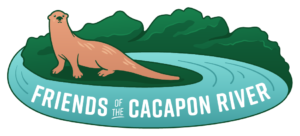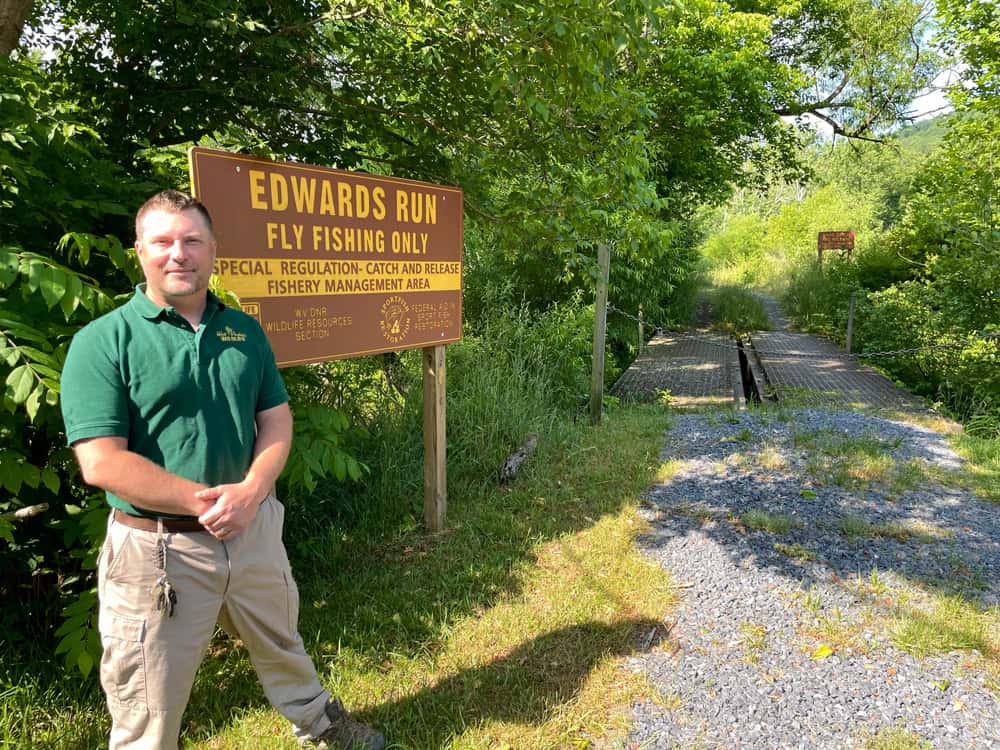Third in a 6-part series appearing every 2 months about the people in government working to improve and protect the Cacapon River and Lost River Watershed and their love for the river.
When Brandon Keplinger was a kid in Maysville, West Virginia, he rode his bike everywhere. Mostly to go fishing, jump in the streams and explore nature around him.
“I would roll over rocks in the stream to see what macroinvertebrates lived there,” Brandon smiled. That kid set up an aquarium to grow stream insects he collected to discover what they would become as adults. He had a connection to water.
He learned a lot about aquatic macroinvertebrates. Snails, worms, crayfish, mussels, and insects spend at least part of their lives in water. They play a crucial role in freshwater streams and rivers by recycling nutrients and providing food for larger creatures.
Brandon expanded that knowledge to become a district fisheries biologist for the West Virginia Division of Natural Resources (DNR). Now he travels from stream to stream in his 1-ton pickup truck.
“I need the pickup truck to haul all the water and fish when we are stocking the streams, pulling boats and collecting trash left at access sites,” Brandon explained. “I cover the W. Va. Potomac River Basin from Pendleton County eastward to Jefferson County.” It’s an eight-county district that includes the Cacapon River Watershed.
“Habitat along the Cacapon River is pretty good, and from our sampling, we see a reasonable number of Smallmouth Bass,” Brandon explained, “but recent impacts of high streamflow during the spawning period can have short-term negative impacts on Smallmouth Bass numbers.” Brandon also works with Channel Catfish, Largemouth Bass, Panfish and Brook Trout.
DNR is rebuilding Brook Trout populations in streams that historically had them. Brook trout are the only trout native to West Virginia.
“We work with Brook Trout as part of our Wildlife Action Plan,” Brandon said. “It is a species of greatest conservation need.” Brook Trout populations are healthy in the western part of Brandon’s district but have diminished in the eastern section with the lower elevation and more development.
“We are trying to gain back populations and habitat where they once thrived,” Brandon said. “We work strictly with heritage lineage Brook Trout.” The genetics of those fish are more likely to be able to adapt to changing conditions.
“The more variable genetics in a population, the more tools it has in its toolbox to combat things like rising air or water temperatures,” Brandon explained. “If Brook Trout can successfully be restored, our native fish stand the best chance of having adaptations needed to survive.”
DNR is seeing success in its wildlife management areas.
“Brook Trout population restoration basically puts a magnifying glass on those streams for other conservation organizations to see successful habitat restoration,” Brandon said proudly. “Those organizations like Trout Unlimited work with private landowners to improve more habitat along the stream.” It’s a win-win for landowners, Brook Trout and the streams.
Whether DNR folks like Brandon work until 2 a.m. on a Thursday for a Largemouth Bass electrofishing effort or deliver fish to stock a stream, Brandon’s passion is as clear as the waters flowing in the Cacapon River. His success and dedication benefit all who enjoy the waterways in the Potomac River Basin.
Peter Wood is a board member of the Friends of the Cacapon River with a mission to preserve, protect, and promote the environmental health and scenic character of the Cacapon River and its watershed.

